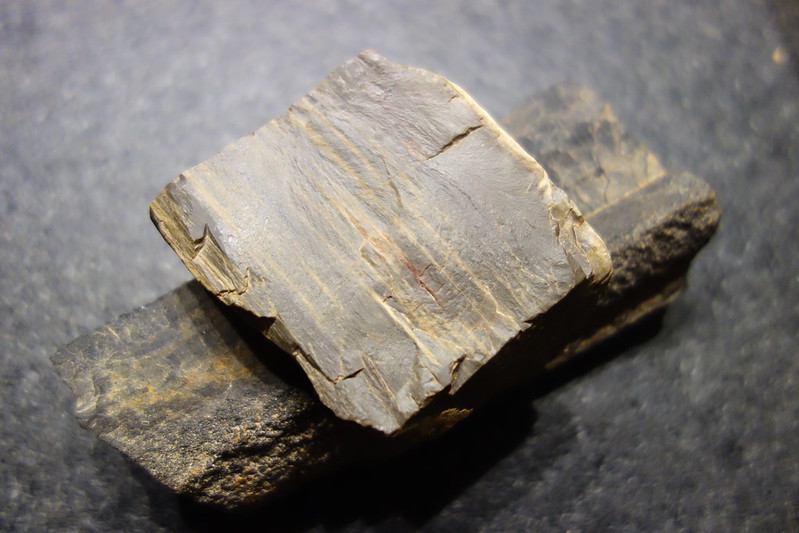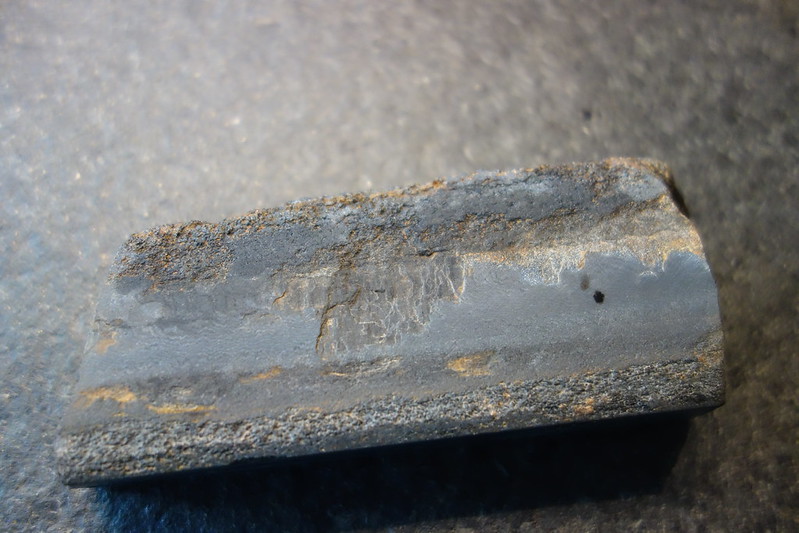Results 21 to 30 of 30
-
11-15-2016, 12:10 PM #21
-
11-15-2016, 12:18 PM #22

Thanks to Sebastian (Sharpchef) i received a source where somebody already tried out to hone on petrified wood.
My peculiar nature: Time is on my side - petrified wood sharpening stone███▓▒░░.RAZORLOVESTONES.░░▒▓███
-
-
11-15-2016, 12:36 PM #23

Sebastian, do you happen to have any available samples for testing? I'm not referring to the honing type of testing, the more invasive kind. It could help a lot.
The above is one theory. One other is, the silicon oxide that contains the wood, that very small quantity, it might even be a single, few molecules crystal here and there, starts working as a catalyst for the formation of silicon salt based dendritic structures within wood, and as cellulose of the wood gets damaged, more space opens for the increase in mass of these dendrites.
Something I overlooked is, I assume that the wood itself hardens as well, aside from its cutting particles and their formations. Having a sample, even a cubic centimeter would help.
I can try to make what I imagine that material to be, or at least try to make something that seems similar, everybody can. I'll give it a try, and if it works, like the previous time with the stone, I'll contact you to test a sample. I have about 500 walnut trees and plenty of wood. It's same family with hickory but would it be good enough?
-
11-15-2016, 10:34 PM #24

I have some Iron Wood.........
-
11-17-2016, 10:17 PM #25
 The tale about "The German Hickory" Hone
The tale about "The German Hickory" Hone
Hey Vasilis, good approach....i dont know if this was ever a real good working thing. Actually all is too foggy and unclear for me and the literature sources are rare...but they do exist. It seems to be clear that petrified wood in the past was used for honing....
For what specific applications the petriefied wood was used is not written down in the literature as far i did the research.
Also if this approach was real, there is no source mentioning the procedure itself which was described in that article i introduced.
So it should just be a fun thing to try out youre approach and see what happens ;-)
Until the years go by and until youre ready with it, i started buying four samples of petrified wood. One looks actually like Chert (probably geologically talking this might be right), the second looks like burned wood, probably stored in swamp conditions, the third and fourth are petrified wood dics which will be cut in two rectangular stones....they were really cheap, 5usd each. But they are hard as hell to lap...this will take hours of lapping *help*
Sample 1&2:



Last edited by doorsch; 11-17-2016 at 10:21 PM.
███▓▒░░.RAZORLOVESTONES.░░▒▓███
-
11-17-2016, 10:26 PM #26
 The tale about "The German Hickory" Hone
The tale about "The German Hickory" Hone
Progress after 80grits WD paper and probably 45minutes hard lapping.....this will take forever...

 ███▓▒░░.RAZORLOVESTONES.░░▒▓███
███▓▒░░.RAZORLOVESTONES.░░▒▓███
-
11-17-2016, 11:00 PM #27

I am 99.99% sure that it's not actual petrified wood. All they did, from what I read, is, place the wood under the soil, in humid conditions, probably. If Petrification was that simple, there wouldn't be any vegetation on these areas because the roots of trees, grass and any plant would end up petrified. Again, thinking about it, the wood should have been cut horizontally from the tree trunk in thin slices, so that water could travel in the pores more easily, as well as having less distance to travel, and, the minerals in the water of that area were passing though these pores into that wood while a significant portion of that cellulose remained intact.
On more serious tests, can someone get a bottle of iodine solution and leave it open next to a piece of that hone? If the hone changes color, then there is some starch in there. Starch isn't important, but it's not a destructive test, and you don't drop anything on it, so, all is well and we learn something.
The most interesting test would be with Schultze reagent; rub it with some sandpaper, collect the dust of the "wood" only and drop it on a porcelain plate or if you happen to have any lab equipment, drop it on something like a petri dish. Then use the reagent and if you see a color change, darkening, then there is some cellulose, so it's not completely petrified. If you don't have the reagent, I do. I can't ship nitric acid or KClO3, so, you'll have to ship the powder.Last edited by Vasilis; 11-17-2016 at 11:07 PM.
-
11-17-2016, 11:03 PM #28
-
11-17-2016, 11:05 PM #29
-
11-17-2016, 11:08 PM #30

Not completely, on one side there is the introduction story as mentioned. On the other there are old literature sources which speak of "petrified wood" there is no reference to that process which was explained...so real Petrified Wood was used in history...
I will post the updates here for sure!███▓▒░░.RAZORLOVESTONES.░░▒▓███


 52Likes
52Likes LinkBack URL
LinkBack URL About LinkBacks
About LinkBacks










 Reply With Quote
Reply With Quote

